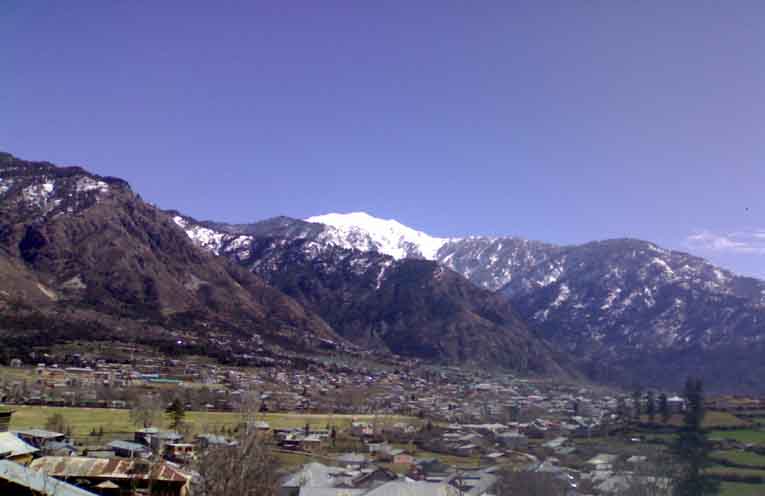
Kishtwar is one of the beautiful district of the state of Jammu and Kashmir in India. Kishtwar district consists of 11 Tehsils (Kishtwar, Chattroo, Marwah, Paddar, Warwan, Nagseni, Drabshalla, Bonjwah, Mughalmaidan, Dachhan and Machail) and 13 Community Development blocks (Drabshalla, Kishtwar, Nagseni, Padder, Chatroo, Dachhan, Marwah, Warwan, Thakrie, Bunjwah, Mughalmaidan, Palmar, and Trigam) . and comprised of 134 panchayats. Kishtwar District has 2 assembly constituencies: Inderwal and Kishtwar. Total Numbers of Villages in Kishtwar are 156 in which 1 village is un-inhabitated. As of 2011, it is the third least populous district of Jammu and Kashmir (out of 22), after Kargil and Leh. It’s Famous For World Renowned Sapphire & Saffron. It’s situated on The Banks Of River Chenab.
Kishtwar district in the state of Jammu & Kashmir is positioned at an altitude of 5374 feet. The positional coordinates of Kishtwar district includes a latitude of 33.3167 and longitude of 75.7667 . Jammu, Udhampur, Srinagar and Awantipur are the locations from one can avail of the air services to reach the district of Kishtwar. The key economic activity of Kishtwar district in Jammu & Kashmir is agriculture. The crops are sold in the local markets by the farmers to earn their day-to-day living. Sheep rearing is another major occupation of the population of Kishtwar. The general characteristics traits of the people of Kishtwar comprises of their simplicity and a very hardworking nature. Since Kishtwar is set on considerably high altitude so the common climates of the place variates in the lowest levels of temperature scale. The handicraft items made by the local people of Kishtwar have a huge demand among those tourists who come to this quaint yet appealing place of Jammu & Kashmir. The natural surrounding of Kishtwar is adorned by majestic mountainous ranges and foliages that collectively makes it a perfect tourist spot of the state of Jammu & Kashmir. The festival of Kishtwar primarily reflects the folk traditions of the place. Apart from its own natural splendors, Kishtwar also flaunts many adjacent tour destinations. The name of Kutal, Dul, Keshwan, Mughal Maidan and Kwar are very popular and inevitably come in the itinerary of tourists.Kishtwar, with its steady economic state and cultural richness, is consistently proceeding towards becoming one of the prominent Jammu & Kashmir districts. Pursuant to Government order Kishtwar has been declared as one of the new Districts, while Atholi (Paddar) which falls in Kishtwar Sub-Division has been declared as new Tehsil. It may be pertinent to mention that vide Govt. Order No. Rev(5)203 of 2005, dated 09-08-2005 three new Tehsils namely Chhatroo, Marwah and Paddar were created, and in fact these three Tehsils have started functioning independently after territorial Tehsildars were posted there. But, vide recent Govt. Order the Committee has been asked to demarcate boundaries among others in respect of Tehsil Atholi (Paddar) as well. Thus, the new District Kishtwar would comprise four Tehsils including Kishtwar and the Committee is to demarcate boundaries of the new District Kishtwar and Tehsil Atholi (Paddar). Kishtwar Sub-Division is bounded by Zanskar on the North, Himachal Pradesh on the East, Doda and Bhaderwah on the South, Kishtwar and Banihal on the West.
Kishtwar in the past used to be an independent hill principality and was merged with the State of Jammu and Kashmir in1821 A.D. With the passage of time Kishtwar became a Tehsil of District Udhampur and remained its part till 1948, when it became part of newly created District Doda in the wake of first re-organization of the state during the post-independence period. Kishtwar branches off in Marwa-Wadwan valley, Paddar valley, Chhatroo valley and is flanked by lofty Himalayas from all sides. The monsoon hardly reaches this part of the State which makes it a drought prone area and insufficient in food grains in particular the Marwah-Wardwan area which remains cut off for 5-6 months in a year due to snowfall in winter. In order to avoid any starvation death sufficient stocks of food grains and other essential commodities are stored well in advance in these areas so that the public may not suffer on this account.
HISTORY: { Kishtwar is first referred to in the Rajatarangini by the ancient name Kashthavata, during the reign of Raja Kalsa of Kashmir (1063–1089), when “Uttamaraja”, the ruler of Kashthavata visited the court of the Kashmir King in company with several other hill chiefs to pay their respects to the Raja. The Mehta Family was given the lands of Kishtwar by the King of Kashmir. Their family temple “Hatta Wali Mata” and their heritage can still be tracked back to Kishtwar. The founder of this family was the Commander-in-Chief of the Kashmir Army “Sip-E-Salar Sri Jiya Lal Mehta”. Known for his bravery and valour he fought the Mughals and northern raiders who invaded the land.Kishtwar merged with the State of Jammu and Kashmir in 1821, A.D. With the passage of time Kishtwar became a Tehsil of District Udhampur and remained so until 1948, when it became part of the newly created District Doda in the wake of first re-organization of the state during the post-independence period. }
Economy: {The economy of area is not regularized with no visible investment from government. The area being rural in nature has agriculture based economy. The Padder area produces world class Pine nuts called chilgoza which is a delicacy and costly dry fruit. In Marwah, Chatroo, Mughalmaidan and Bounjwah Tehsils wall nut production of best quality walnuts in thousands of tons is recorded but due to absence of any fruit Mandi the exact figures are not available. Besides wallnut Marwah Tehsil produces thousands of tons of Kidney Beans which is the cash crop of the area. Villages of Pochhal, Matta and Hidyal produce Saffron of good quality. The rural households are also abundantly gifted by nature through cash crops of eatable mushrooms and Morchilla called guchhi in local language. Some families have been reported to earn more than Rs1,00,000 per year by just selling the dried morchilla in local markets. The eatable ferns are also a natural cash crop of the area. The apples are produced in some areas however the quality of Kishtwar apple is not of world class. Due to dry nature of climate the village peasant population usually grow Wheat and barley in Rabi season and Kidney bean and Maize in Kharif season. The rivers are rich source of electricity and the site of the hydroelectric power projects of Dul Hasti 390 MW, Ratle 850 MW, Kirthai 1400 MW, Pakal Dool 1,000 MW, Lower Kalnai 48 MW and Chaudhary 15MW, Keeru HEPP and Kwar HEPP with the highest per capita wattage production in world for such a small area.These projects have been the largest source of employment and have immensely contributed to the prosperity of the area.Kishtwar has distinction of producing world class blue Diamond Saphhire and its Kashmir sapphire was mined at Padder valley. The area is although rich in natural mineral resources but poor infrastructure has posed difficulty in its extraction. Mineral gypsum is mined at Village Trigam. The river sand of Chenab is of best quality and used extensively for construction purpose.}
Tourism The Chenab River flows through the district and is joined by tributries such as Marvisudar ruver of Mawah, Fambar Nallah, Chingam Nallah which meet at the confuence near Bhandarkoot. The rivers have given a unique look to the area with steep gorges and wide plains on the way. Padder Tehsil has breathtaking mountain landscape which are a treat to the eyes of travellers. Warwan valley and Marwah valleys are unique in being located in the way of river Marusudhar giving a mesmerizing look to the area.The area is also famous for its high mountain passes which have been the mountaineers delight since British era. Many illustrations are found in the travelogue written by British writersincludin Otto Rothfields With pen and Rifle in Kashmir. The Kishtwar Anantnag National Highway passes through the famous Synthan Pass and Daksum Nowpachi Road passes through the Margan top a 13 km long and 5100m high pass. The Steep Brahma mountain peak is situated at Dachhan which is documented by British mountaineers. The warwan Valley has been rated among India’s top ten trekking destination with a wide range of landscape. Saffron of purest quality is produced in the iron rich soil at Pochhal, Matta, Lachdayaram and Hidyal. Kishtwar National Park, in the northeast region of the district, has a large number of peaks and glaciers. The town has a small Air Landing ground under the control and management of Indian Army which cater to civil and military Helicopters. The 33 hectare Chowgan is the largest natural ground located in the center of city and is used as a venue of recreation and religious and political gatherings. Mini Secretariat housing all the offices of Kishtwar District Administration besides world class Conference Hall is located 3 km from main bus stand in Kuleed area .
Kishtwar is endowed with dense forests of deodar, pine and fir. There are high altitude mountains ranging between 20,000 feet to 21,000 feet like Nun Kun, Burmah and Barnag. Pilgrims and tourists visit shrines in the area including shrine of Sufi saint Shah Abdal sahab located at Village Dugga which is 5 km from main Bus Stand. The shrine of Sufi saint Shah Muhammad Farid-ud-Din Sahib Baghdadi who arrived in Kishtwar during the reign of Mughal emperor Aurangzeb Aalamgir from the kingdom of Baghdad is revered as one of the holiest shrines in Jammu province after Baba Ghulam shah Badshah, The sons of Shah Muhammad Farid-Ud-Din Baghdadi were also the awliya namely Shah Muhammad Akhyar-ud-Din, Shah Muhammad Anwar-ud-Din who are laid to rest alongside their father and mother at Astan Bala Kishtwar just 1 km from Bus stand Kishtwar Another son Hazrat shah Muhammad Asrar-ud-Din Sahib is laid to rest at Astan Payein on southern edge of Parade ground or Chowgan Kishtwar. Every year on 9th November or 25 Kaartik of Bikrami era a grand Urs is celebrated at Astan Payein where more than 1,00,000 devotee from all.kishtwar is well known for its saffron cultivation faiths and religion come to pay the obeisance at the grave of Shah Muhammad Asrar-ud-Din Baghdadi. Department of Tourism j & k govt. And awkaf make elaborate arrangements for pilgrims on this eve. At Bhandarkoot the ziarat of Zain-ud-Din wali of Kashmir is located at the confluence of River Chenab which sees a rush of devotees every day. At Rakna palmar there is also a ziarat of zain shah sahab. Kishtwar has also the holy Hindu pilgrimage sites of Athara Bhuja Devi temple, Chandi Mata temple and Asthadash bhuja Sathal Mata Temple. Every year the pilgrimage is arranged for Machail yatra a mega event attended by more than hundred thousand people from all over the country. The annual sarthal yatra is also attended by thousands of devotees.
Kishtwar is having lot of potential for generation of Hydro Electric Power. One of the major power projects is Dul-Hasti which is at the commissioning stage. With the commissioning of this project the economy of the area is sure to boost up and the pace of development of Kishtwar is sure to accelerate in the coming days. The area popularly known as ‘Land of Sapphire and Saffron’ is also very rich in forest products. The richest forests in Jammu and Kashmir are found on the high mountains and hills of Kishtwar. Kishtwar is linked with other parts of the state by an all weather road National Highway 1-B, which remains open throughout the year. Kishtwar is also connected with Kashmir Valley by Chhatroo- Synthan road, which is being upgraded into National Highway. With the up gradation of this road it will become an alternate route for the tourists visiting Kashmir Valley.
For purposes of ascertaining views of the District Administration and people’s representatives in respect of fixing geographical boundaries of new District Kishtwar, the Demarcation Committee visited various areas of the Sub-Division. A large number of representations were presented to the committee, besides verbal suggestions made by the sitting and Ex-MLAs/MLCs who met the Committee, during its visit to Kishtwar and Doda. Although there were some demands for additions/deletions of certain areas in the existing boundaries of the Sub-Division (now District) Kishtwar, yet on the whole the consensus opinion was that existing boundaries of Kishtwar Sub- Division be made boundaries of new District Kishtwar, but for a forceful demand projected by the people of Bunjwa for exclusion of their area from Tehsil Kishtwar and its inclusion in Tehsil Thathri keeping in view the geographical location and connectivity of the area. No doubt, there were some dissenting views also, but the Committee during its visit had observed that in view of the following considerations, there is a strong case for exclusion of Patwar Halqa Patnazi comprising five villages namely Patnazi, Kither, Binoon, Nali and Jirwar with a population of 6715 souls, and Patwar Halqa
Jawalapur consisting of six villages namely Jawalapur, Kewa, Mori, Balagran, Chamoti and Tipri with a population of 7257 from Kishtwar and their inclusion in Tehsil Thathri. Thus, the new District Kishtwar would comprise four Tehsils namely Kishtwar (except two Patwar Halqas namely Patnazi and Jawalapur), with sixteen Patwar Halqas having seventy three villages, Tehsil Marwah with eleven Patwar Halqas having twenty seven villages, Tehsil Chhatroo with seven Patwar Halqas having thirteen villages and new Tehsil Atholi (Paddar) with five Patwar Halqas having thirty two villages. With this the total number of Patwar Halqas and villages in the new District comes to thirty nine & one hundred forty five respectively.
Paddar Valley is the farthest corner of District Kishtwar on south-eastern side touching its borders with Himachal Pradesh, Zanskar Valley of Ladakh and Marwah-Warwan Valley. Paddar is known for sapphire deposits and other forest products like Zeera and Guchhi. Although vast areas of the Valley are under forest cover yet few villages are also known for producing green/dry vegetables/pulses such as Peas and Rajmash. Paddar Valley comprises five Patwar Halqas and thirty two villages.
An official Census 2011 detail of Kishtwar, a district of Jammu and Kashmir has been released by Directorate of Census Operations in Jammu and Kashmir. Enumeration of key persons was also done by census officials in Kishtwar District of Jammu and Kashmir.
In 2011, Kishtwar had population of 230,696 of which male and female were 120,165 and 110,531 respectively. In 2001 census, Kishtwar had a population of 190,843 of which males were 100,235 and remaining 90,608 were females. Kishtwar District population constituted 1.84 percent of total Maharashtra population. In 2001 census, this figure for Kishtwar District was at 1.88 percent of Maharashtra population.
There was change of 20.88 percent in the population compared to population as per 2001. In the previous census of India 2001, Kishtwar District recorded increase of 26.84 percent to its population compared to 1991.
Kishtwar Table Data
| Description | 2011 | 2001 |
|---|---|---|
| Actual Population | 230,696 | 190,843 |
| Male | 120,165 | 100,235 |
| Female | 110,531 | 90,608 |
| Population Growth | 20.88% | 26.84% |
| Area Sq. Km | 1,644 | 1,644 |
| Density/km2 | 140 | 103 |
| Proportion to Jammu and Kashmir Population | 1.84% | 1.88% |
| Sex Ratio (Per 1000) | 920 | 904 |
| Child Sex Ratio (0-6 Age) | 924 | 924 |
| Average Literacy | 56.20 | 43.31 |
| Male Literacy | 68.92 | 57.17 |
| Female Literacy | 42.36 | 27.74 |
| Total Child Population (0-6 Age) | 39,396 | 39,396 |
| Male Population (0-6 Age) | 20,479 | 20,479 |
| Female Population (0-6 Age) | 18,917 | 18,917 |
| Literates | 107,506 | 0 |
| Male Literates | 68,700 | 0 |
| Female Literates | 38,806 | 0 |
| Child Proportion (0-6 Age) | 17.08% | 20.64% |
| Boys Proportion (0-6 Age) | 17.04% | 20.43% |
| Girls Proportion (0-6 Age) | 17.11% | 20.88% |
Kishtwar District Density 2011
Kishtwar Literacy Rate 2011
Kishtwar Sex Ratio 2011
Kishtwar Child Population 2011
Kishtwar Houseless Census
Kishtwar Religion-Wise Data 2011
| Description | Total | Percentage |
|---|---|---|
| Hindu | 93,931 | 40.72 % |
| Muslims | 133,225 | 57.75 % |
| Christian | 277 | 0.12 % |
| Sikh | 450 | 0.20 % |
| Buddhist | 2,094 | 0.91 % |
| Jain | 3 | 0.00 % |
| Others | 514 | 0.22 % |
| Not Stated | 202 | 0.09 % |
Kishtwar Population 2015
Kishtwar District Urban/Rural 2011
Out of the total Kishtwar population for 2011 census, 6.44 percent lives in urban regions of district. In total 14,865 people lives in urban areas of which males are 8,179 and females are 6,686. Sex Ratio in urban region of Kishtwar district is 817 as per 2011 census data. Similarly child sex ratio in Kishtwar district was 868 in 2011 census. Child population (0-6) in urban region was 1,627 of which males and females were 871 and 756. This child population figure of Kishtwar district is 10.65 % of total urban population. Average literacy rate in Kishtwar district as per census 2011 is 86.07 % of which males and females are 92.58 % and 78.04 % literates respectively. In actual number 11,394 people are literate in urban region of which males and females are 6,766 and 4,628 respectively.
As per 2011 census, 93.56 % population of Kishtwar districts lives in rural areas of villages. The total Kishtwar district population living in rural areas is 215,831 of which males and females are 111,986 and 103,845 respectively. In rural areas of Kishtwar district, sex ratio is 927 females per 1000 males. If child sex ratio data of Kishtwar district is considered, figure is 926 girls per 1000 boys. Child population in the age 0-6 is 37,769 in rural areas of which males were 19,608 and females were 18,161. The child population comprises 17.51 % of total rural population of Kishtwar district. Literacy rate in rural areas of Kishtwar district is 53.98 % as per census data 2011. Gender wise, male and female literacy stood at 67.04 and 39.89 percent respectively. In total, 96,112 people were literate of which males and females were 61,934 and 34,178 respectively.
All details regarding Kishtwar District have been processed by us after receiving from Govt. of India. We are not responsible for errors to population census details of Kishtwar District.
| Description | Rural | Urban |
|---|---|---|
| Population (%) | 93.56 % | 6.44 % |
| Total Population | 215,831 | 14,865 |
| Male Population | 111,986 | 8,179 |
| Female Population | 103,845 | 6,686 |
| Sex Ratio | 927 | 817 |
| Child Sex Ratio (0-6) | 926 | 868 |
| Child Population (0-6) | 37,769 | 1,627 |
| Male Child(0-6) | 19,608 | 871 |
| Female Child(0-6) | 18,161 | 756 |
| Child Percentage (0-6) | 17.50 % | 10.95 % |
| Male Child Percentage | 17.51 % | 10.65 % |
| Female Child Percentage | 17.49 % | 11.31 % |
| Literates | 96,112 | 11,394 |
| Male Literates | 61,934 | 6,766 |
| Female Literates | 34,178 | 4,628 |
| Average Literacy | 53.98 % | 86.07 % |
| Male Literacy | 67.04 % | 92.58 % |
| Female Literacy | 39.89 % | 78.04 % |
Source : census2011.co.in
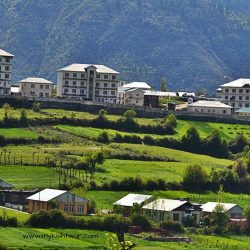
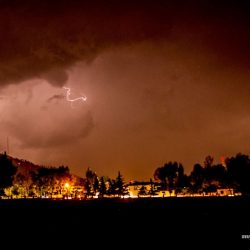
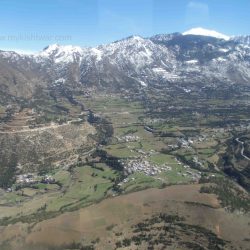
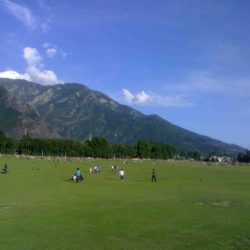
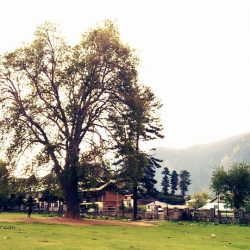
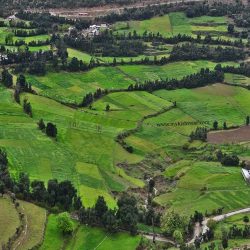
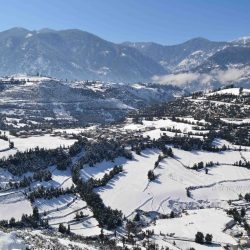
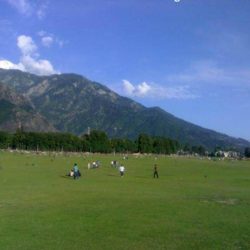
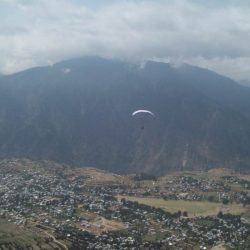
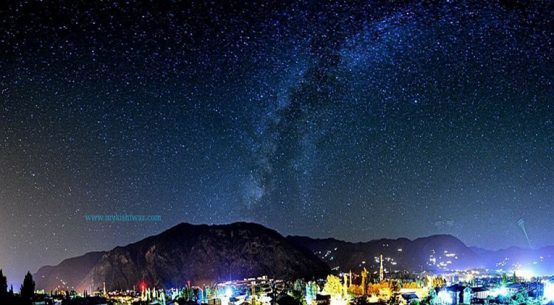
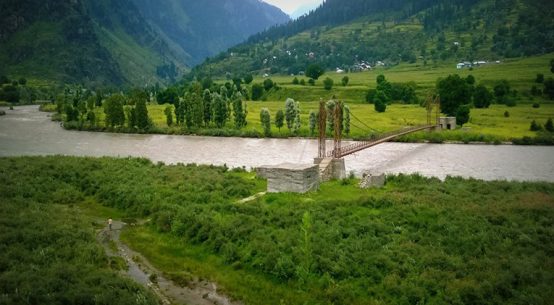
One thought on “Tehsil Kishtwar”